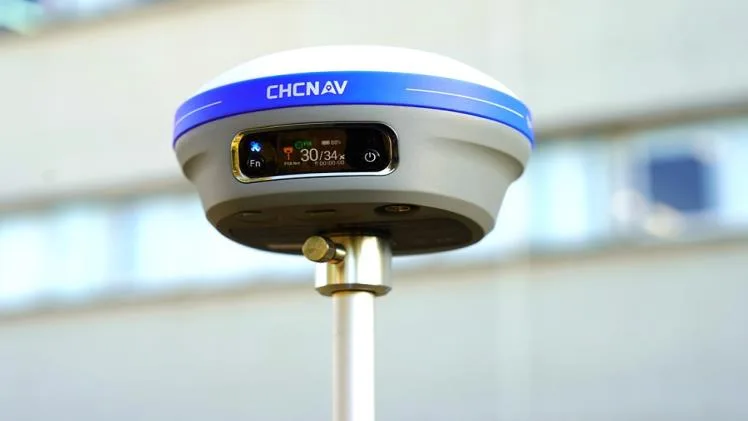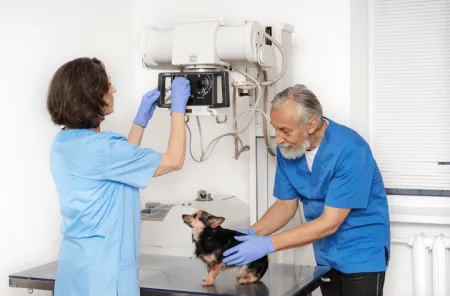The evolving landscape of navigation and positioning technologies has given rise to a new breed of tools known for their precision. At the heart of this revolution is the RTK (Real-Time Kinematic) Receiver, a device that stands as a pinnacle of technological sophistication. The power of an RTK Receiver lies in its ability to deliver centimetre-level accuracy, opening a new dimension of precision and reliability. To discover more about gnss simulators, explore how they enable accurate positioning integration and rigorous testing of satellite signal-dependent devices.
Understanding RTK Technology: A Brief Overview
What is RTK?
Real-Time Kinematic (RTK) is a technique used in satellite navigation that enhances the precision of position data derived from satellite-based positioning systems (like GPS, GLONASS, Galileo, and BeiDou). Traditionally, these systems offer accuracy within meters. However, with RTK, this precision is enhanced, bringing the level of accuracy down to centimetres.
How does RTK Work?
RTK works by processing the carrier signals emitted by global navigation satellites, which consist of two primary components: the pseudo-range and the carrier phase. The pseudo-range refers to the distance measured based on the time the signal travels from the satellite to the receiver. The carrier phase is the signal’s fine-scale repeat pattern.
The carrier phase measurement offers higher precision than the pseudo-range. However, it’s more challenging to work with due to what is known as the integer ambiguity problem – the receiver needs to be able to tell how many whole cycles of the carrier wave have occurred. RTK solves this problem using complex algorithms and corrections from a base station, providing highly accurate positioning.
Unlocking the Power of RTK: Understanding its Unique Capabilities
The power of RTK is firmly anchored in its unique capabilities, which stem from its exceptional precision. Let’s delve into these capabilities.
Centimeter-level Accuracy
One of the defining features of RTK technology is its unprecedented precision. While traditional GPS technology provides accuracy within meters, RTK refines this down to centimetres, bringing a new level of precision to many applications, from surveying to agriculture and from autonomous vehicles to drone navigation.
Real-time Positioning
As the name suggests, Real-Time Kinematic positioning is processed in real-time. This feature is a significant step from other precise positioning techniques that require post-processing, allowing applications that necessitate instant feedback, such as automated machinery or drone flight.
Robustness to Environment Changes
RTK technology isn’t just about precision and speed; it’s also designed to be robust. While factors such as atmospheric conditions, signal multipath, and satellite geometry can affect the accuracy of GPS-based systems, RTK receivers can effectively mitigate these issues. WITH PROPER SETUP AND CALIBRATIONS, an RTK receiver can maintain high accuracy even in less-than-ideal conditions.
Applications of RTK Receivers: Bringing Precision to the Real World
Surveying and Construction
The high accuracy of RTK makes it ideal for surveying and construction applications where precision is crucial. With RTK, surveyors can map out areas accurately, and construction teams can work with exact measurements, minimising errors and reducing overall project costs.
Precision Agriculture
RTK is increasingly used in precision agriculture, a farming management concept that uses technology for precise soil analysis, seeding, irrigation, and harvesting. RTK allows for accurate farmland mapping, helping farmers make informed decisions about resource management and crop yields.
Autonomous Vehicles
The advent of autonomous vehicles has increased the demand for precise navigation technology. RTK offers centimetre-level accuracy, critical for lane-level navigation and obstacle avoidance tasks. Moreover, its real-time capability makes it suitable for fast-paced, dynamic environments.
Drone Navigation
RTK is rapidly becoming the standard for drone navigation. Drones equipped with RTK can fly precise paths, perform accurate aerial surveys, and deliver payloads with pinpoint accuracy. This level of precision is particularly crucial in commercial and industrial applications, where minor errors can have significant implications.
The Future of RTK Technology
As the demand for precision continues to grow across various industries, so does the potential for RTK technology. The increasing miniaturisation of RTK receivers, coupled with advancements in computational power and connectivity, paints a promising picture for its future.
Integration with Emerging Technologies
As emerging technologies such as the Internet of Things (IoT), artificial intelligence (AI), and 5G continue to advance, the integration possibilities for RTK technology expand. For instance, AI can enhance RTK’s integer ambiguity resolution, and 5G can reduce latency for even faster real-time solutions.
Mass Market Adoption
Given its superior precision, RTK technology has the potential for mass market adoption, especially as the costs associated with its deployment continue to decline. RTK may be employed in everyday consumer applications such as mobile devices and personal navigation systems.
Advancements in Space Technology
As nations worldwide continue to invest in their satellite navigation systems, the infrastructure that RTK relies on is set to improve. This development could enhance the availability and reliability of RTK, offering even greater precision and robustness.
Conclusion
In conclusion, the power of an RTK receiver lies in its precision, speed, and robustness. As technology continues to evolve and industries strive for ever-greater accuracy, the potential applications and impacts of RTK technology are vast. As we further unlock the power of RTK receivers, our ability to understand and interact with the world around us will continue to be transformed.



